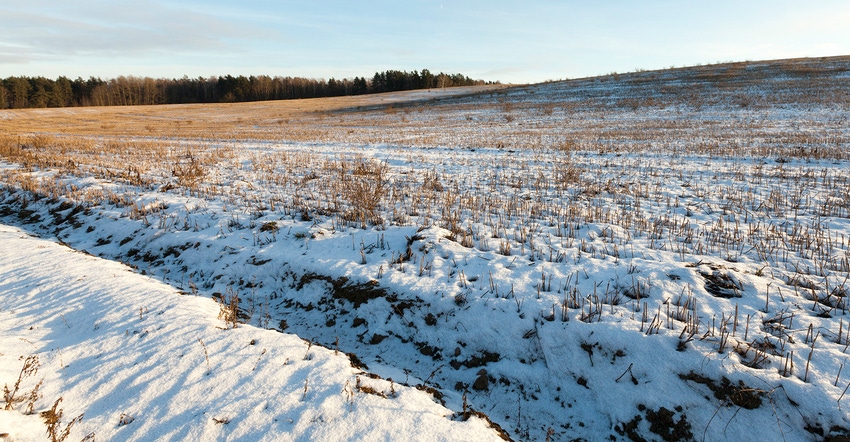April 13, 2018

Late-season snows across the state may spur concerns with fertilizer application this spring, according to a University of Minnesota Extension specialist.
Application of any fertilizer source should not occur when the ground is still frozen, especially on top of snow, notes Dan Kaiser, U-M Extension nutrient management specialist, in a recent Minnesota Crop News blog.
“All commercial fertilizer products are water-soluble and will dissolve readily in liquids,” he says. “There is an extreme risk for fertilizer to run off the field with snowmelt, regardless of the fertilizer source.”
In order for the soil to retain nutrients, the nutrients need to come in contact with soil particles. This reaction won’t happen in frozen soils, and any fertilizer applied will move with water off the field or to low areas of the field.
Environmental issues aside, applying fertilizer on frozen or snow-covered soils presents a significant economic risk, he adds, because that purchased material won’t be available to the crop when it’s growing in the field.
Kaiser offered the following Q&A:
If my soil is frozen but there is no snow, can I safely apply fertilizer?
It depends on how much precipitation might occur the future. Solid surfaces pose a significant risk for loss if any precipitation event, rain or snow, happens while the ground is still frozen. To avoid economic risk, wait to apply any fertilizer until the soil thaws enough to incorporate the fertilizer, or at a point where the nutrients can react with the soil.
If I need to make multiple fertilizer passes this spring, what are my options?
With phosphorus and potassium, use your soil tests. For high and very-high soil tests, it’s not likely that P and K will be short. Any P or K that’s needed can be applied in-furrow as a starter, if that option is available. Mobile nutrients like nitrogen or sulfur are more critical for corn production because of the crop’s level of response to these nutrients. Without P and K application soil tests may decline, but the impact of not applying, or removal of, these nutrients will not likely impact crop production in the short term. In most cases, nitrogen and sulfur application can be delayed until after planting to allow for spring application of phosphorus. The nitrogen contained with the phosphorus in fertilizer sources used should be sufficient until an early sidedress application of N is made.
Source: University of Minnesota Extension
You May Also Like




